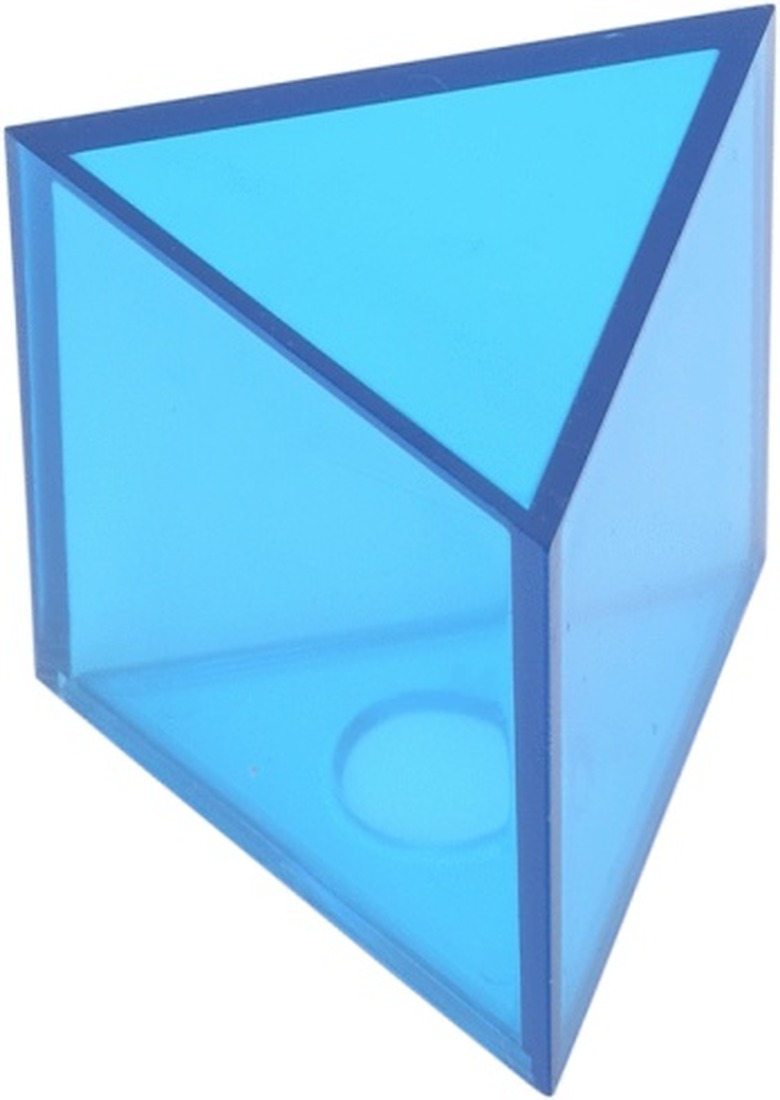How To Find The Area Of A Triangular Prism
A prism is defined as a solid figure with a uniform cross section. There are many different types of prisms, from rectangular to circular to triangular. You can find the surface area of any type of prism with a simple formula, and triangular prisms are no exception. It can be helpful to understand how to calculate surface area of this shape if you are working on a home project involving triangular prisms or if you are simply trying to help your child with his math homework.
Step 1
Determine the measurements of the prism's base. You will need to know the length of one triangle side and the height between that side and the opposite vertex. Find the area of the base by using the following formula: base area = 1/2 × base side × height. Record this value.
Step 2
Measure all three sides of the triangular base and the height of the prism between its two bases. Record these values.
Step 3
Use the prism measurements to find the perimeter of the base with this formula: Side 1 + Side 2 + Side 3. Record this value.
Step 4
Calculate the surface area of the triangular prism using this formula: (2 × area of base) + (perimeter of base × height of prism). Fill in the value for the area of the base, found in Step 1, and the value for perimeter of the base, found in Step 2. The resulting value from this final equation will give you the surface area of the triangular prism.
Cite This Article
MLA
Girone, Cate. "How To Find The Area Of A Triangular Prism" sciencing.com, https://www.sciencing.com/area-triangular-prism-8165114/. 24 April 2017.
APA
Girone, Cate. (2017, April 24). How To Find The Area Of A Triangular Prism. sciencing.com. Retrieved from https://www.sciencing.com/area-triangular-prism-8165114/
Chicago
Girone, Cate. How To Find The Area Of A Triangular Prism last modified March 24, 2022. https://www.sciencing.com/area-triangular-prism-8165114/
